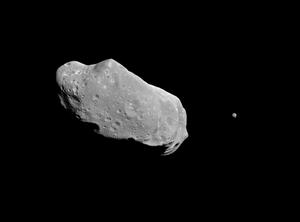Glossary term: 小行星帶
Description: 小行星帶位於火星和木星之間的區域;圍繞該區域運行的是矮行星穀神星和大量主要由岩石和一些礦物組成的小型小行星。小行星帶被稱為主小行星帶,以便將其與太陽系中發現的其他小天體(即近地天體和特洛伊群)區分開來。
Related Terms:
See this term in other languages
Term and definition status: The original definition of this term in English have been approved by a research astronomer and a teacher The translation of this term and its definition is still awaiting approval
This is an automated transliteration of the simplified Chinese translation of this term
The OAE Multilingual Glossary is a project of the IAU Office of Astronomy for Education (OAE) in collaboration with the IAU Office of Astronomy Outreach (OAO). The terms and definitions were chosen, written and reviewed by a collective effort from the OAE, the OAE Centers and Nodes, the OAE National Astronomy Education Coordinators (NAECs) and other volunteers. You can find a full list of credits here. All glossary terms and their definitions are released under a Creative Commons CC BY-4.0 license and should be credited to "IAU OAE".
If you notice a factual or translation error in this glossary term or definition then please get in touch.
Related Media
穀神星
Credit: NASA / JPL-Caltech / UCLA / MPS / DLR / IDA / Justin Cowart
License: CC-BY-2.0 Creative Commons Attribution 2.0 Generic icons
伊達和達克提爾
Credit: NASA/JPL credit link
License: PD Public Domain icons










